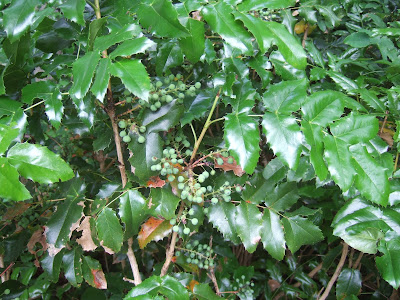Over time values and what society cares about shifts.
Over time society values and what people care about shifts. The Whatcom County Council in a 6-1 vote reflected some of that change in thinking. The Council voted on some policy changes to the Cherry Point area of the county: http://www.whatcomcounty.us/DocumentCenter/View/28301
Cherry Point is designated stand-alone urban growth area designated for heavy industrial land use. The designation as urban is a bit unique in that it is not associated with a city. The area is used by two oil refineries and an aluminum smelter. All three are served by deep-water piers. The deep water access and out of city location made this area attractive as heavy industrial site.
The council action was at least in part a reaction to the permit process that was triggered by the application for the construction of a large coal export terminal. It was also a reaction to larger changes taking place at the national level regarding crude oil and a concern that the site could become a crude oil or natural gas export facility.
The policy shifts are not very big, but they do recognize some changes and concerns that were not recognized in the past such as the potential of exporting crude oil or other unrefined fossil fuel products, the impact of rail shipping to the terminals, and the recognition of treaty rights regarding the usual and accustomed fishing and hunting areas. The last item is a big deal and was to a significant degree ignored by the recent coal terminal proponent.
The hearing was very long lasting from a bit after 7:00 to 12:00. The range of views was interesting to listen to, but hearings this long are a test of endurance.
Contrary to some views expressed, this has policy shift had been a long process that started nearly a year ago and had already gone through a lengthily public process with hearings and changes to the original proposal.
The most forceful objections were from BP oil. They do not want restrictive policies regarding crude export or new pier construction. They took a number of approaches to their objections, including some mischaracterization of policy changes. The main objection is that by removing the possible ability to use the site as a crude oil export facility, the operation
A strategy of the anti change group was to hold a rally. There were an equal number of pro change folks that held a smaller rally and filled the council chambers before the meeting.
Pro policy change or not, society values do shift. Bellingham was once a coal town.
Over time society values and what people care about shifts. The Whatcom County Council in a 6-1 vote reflected some of that change in thinking. The Council voted on some policy changes to the Cherry Point area of the county: http://www.whatcomcounty.us/DocumentCenter/View/28301
Cherry Point is designated stand-alone urban growth area designated for heavy industrial land use. The designation as urban is a bit unique in that it is not associated with a city. The area is used by two oil refineries and an aluminum smelter. All three are served by deep-water piers. The deep water access and out of city location made this area attractive as heavy industrial site.
The council action was at least in part a reaction to the permit process that was triggered by the application for the construction of a large coal export terminal. It was also a reaction to larger changes taking place at the national level regarding crude oil and a concern that the site could become a crude oil or natural gas export facility.
The policy shifts are not very big, but they do recognize some changes and concerns that were not recognized in the past such as the potential of exporting crude oil or other unrefined fossil fuel products, the impact of rail shipping to the terminals, and the recognition of treaty rights regarding the usual and accustomed fishing and hunting areas. The last item is a big deal and was to a significant degree ignored by the recent coal terminal proponent.
The hearing was very long lasting from a bit after 7:00 to 12:00. The range of views was interesting to listen to, but hearings this long are a test of endurance.
The Council takes in 5 hours of testimony - 3 minutes max per person
Contrary to some views expressed, this has policy shift had been a long process that started nearly a year ago and had already gone through a lengthily public process with hearings and changes to the original proposal.
The most forceful objections were from BP oil. They do not want restrictive policies regarding crude export or new pier construction. They took a number of approaches to their objections, including some mischaracterization of policy changes. The main objection is that by removing the possible ability to use the site as a crude oil export facility, the operation
Anti change rally before meeting
A strategy of the anti change group was to hold a rally. There were an equal number of pro change folks that held a smaller rally and filled the council chambers before the meeting.
Pro policy change or not, society values do shift. Bellingham was once a coal town.
Mine entrance and infrastructure in the northwest part of Bellingham
This mine closed in 1954
Blue Canyon Mine loading facility in the 1890s prior to the rail line to the mine
Coal terminal in Bellingham Bay





































